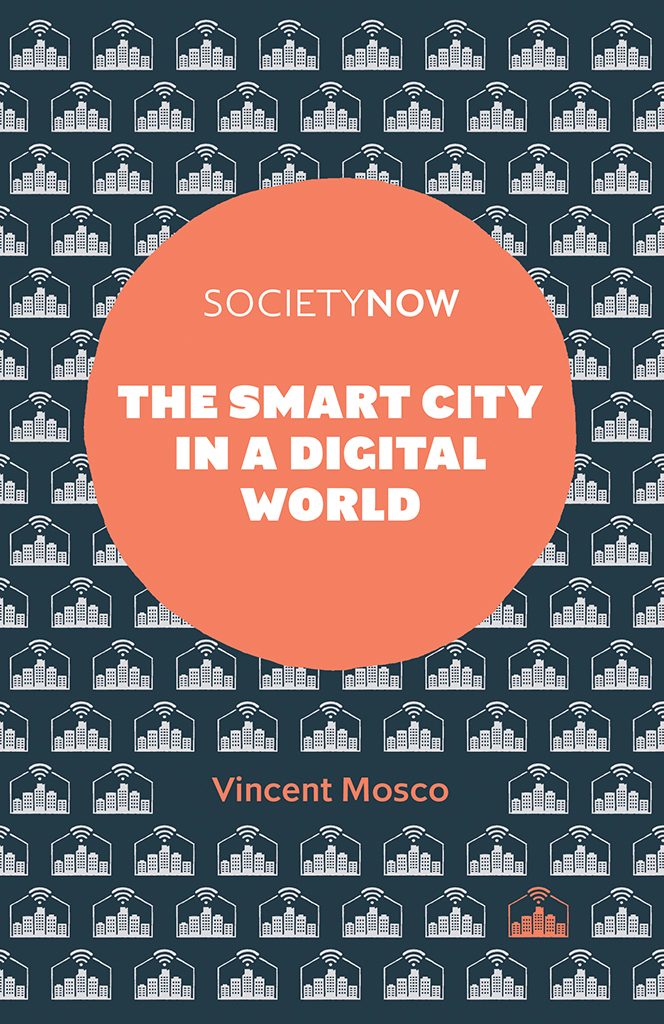The smart city in a digital world

Bob Emmerson
This is an insightful, informative book that takes a critical, informed look into a technology-driven development from a social sense perspective. It questions the belief that creating smart cities is primarily about applying smart technologies to urban environments. It enlarges the debate and avoids going down well-trodden, over-hyped paths that emphasise the benefits that accrue to the technology companies. Unfortunately this distinctive different approach is not reflected in the title, says Bob Emerson.
Introduction
The author, Vincent Mosco is an academic as well as the author or editor of 26 books and over 200 articles on communications, technology and society. This combination means that “The Smart City In A Digital World” is both a wide-ranging, authoritative source of insightful information as well as an easy read.
Professor Mosco makes several forceful points up front. For example, smart city developments have co-opted the concept of ‘smart’ and identified it with technologies that do little or nothing for the working poor or the need for affordable housing. They either ignore the general public or provide minimal information. Smart cities can easily become exclusive environments that cater to the rich.

Vincent Mosco
This is happening and examples are included where that was specifically designed to happen. Creating urban places that work for all is a tall ask but it’s doable if the political will is there. However, examples are included where authorities not only hand the development over to technology corporations, but also allow them to create and own their own environment. They have big bucks in the bank and can make huge investments because of the growing value of surveillance data on every aspect of city life.
Benefits of smart cities
That said the book is not a diatribe. The manifold benefits of smart cities are covered as well as the enabling technologies. They include safer streets, cleaner air, more efficient transportation, better healthcare and instant communications.
However, while big tech corporations talk up these and other benefits, they also ignore issues such as the looming prospect of massive climate changes, which are either ignored or counteracted with overrated technology solutions. And on the governance front while algorithms take complex decisions off the hands of flawed humans, it is worth noting that they may be based on age, class, gender and other legacy assumptions.
I found this upfront, critical appraisal of smart cities to be refreshingly different from the hype that hits my inbox every day. Reminders about the history of this development were also interesting and informative, e.g., the wired city concept that didn’t work out the way envisaged. The reason had more to do with political decisions and economic sense than technology, but it did deliver broadband communications over cable.
In order to do justice to this book I’d have to extend this review by several hundred words so I’ll just summarise the highlights of the remaining chapters.
Chapter 3 has an intriguing title” “City Of Technology; Where The Streets Are Paved With Data”, which indicates that most descriptions of smart cities identify key technologies. They include the IoT, cloud computing and big data analytics. Command and control is also examined. Chapters 4, 5 and 6 address governance issues. State-driven, followed by private enterprises and then citizens. The state-driven deployments in Singapore, China and India are detailed. The chapter on private enterprise starts with Disney, followed by three of the usual suspects: Amazon, Google and Facebook. Private governance highlights Barcelona, Amsterdam and Paris.
I want to jump to chapter 8, the last, because it contains a kind of manifesto for a smart city. The author suggests that people make cities smart, that they are democratic and value public spaces, data should be shared, privacy defended, there should be no discrimination, the right to communicate should be preserved, the environment protected and that smart cities and their streets are about people, not cars.

Conclusion
This is a fact-filled publication. Educational and easy to read. The author is well informed, has opinions but he is not opinionated. It comes from Emerald Publishing, priced at $24 (€21.6) available on Amazon
This book is reviewed by freelance technology writer, Bob Emmerson
Comment on this article below or via Twitter @IoTGN
